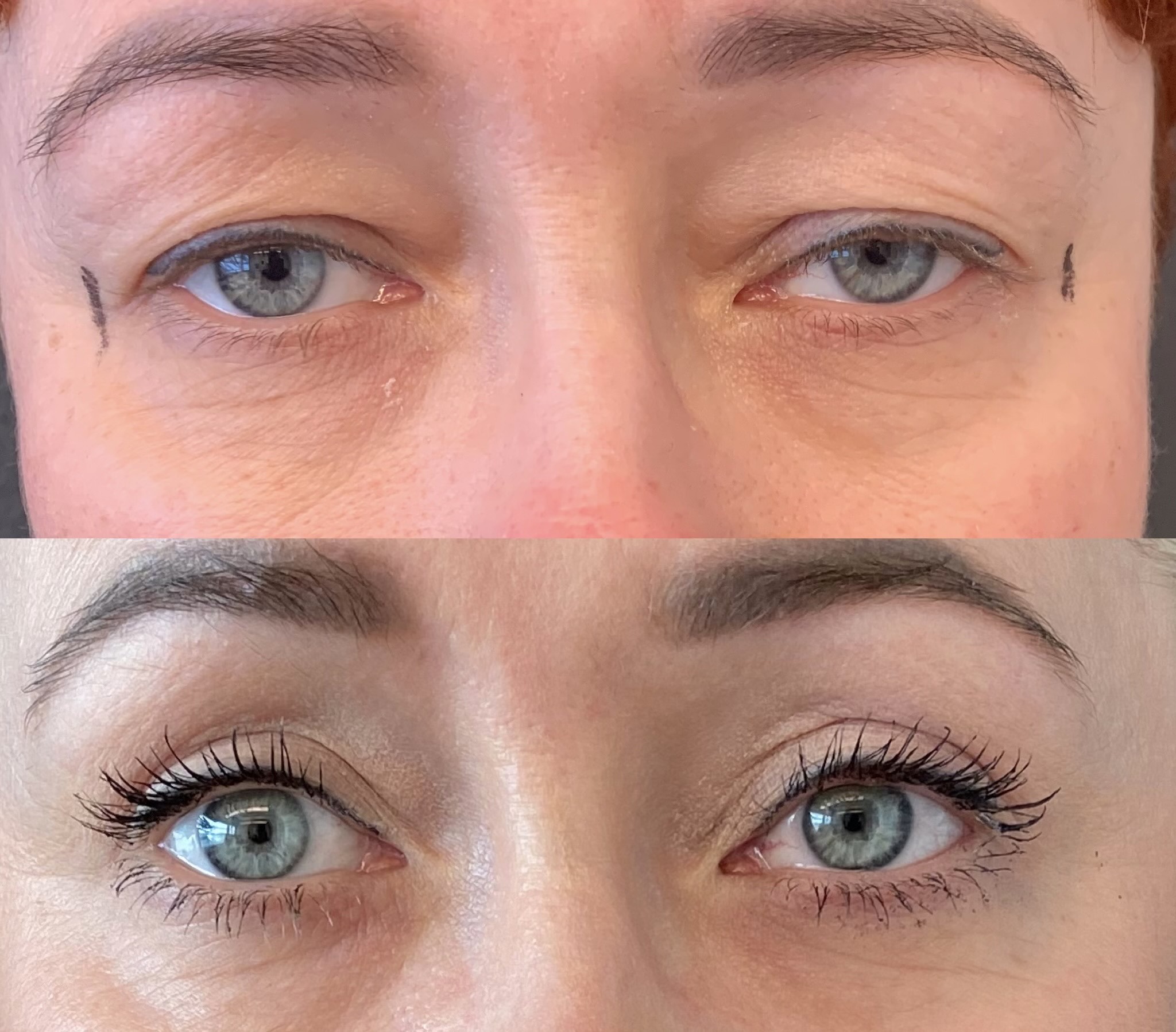The eye area often reveals both lifestyle and age
The under-eye area is one of the most challenging regions in aesthetic medicine due to its delicate and complex anatomy. Because it has almost no sebaceous glands or fat tissue, the skin around the eyes is significantly thinner and more sensitive than anywhere else on the face or body.
The appearance of the eye area is affected by lifestyle, diet, sleep, long hours in front of screens, fatigue, stress, and more. Genetics and individual anatomy play an important role, as does general health.
Do eye creams actually help?
Yes – every woman should use a dedicated eye cream both in the morning and evening, in addition to her regular facial moisturizer. The eye cream should be gentle and non-irritating, and most importantly, should not cause puffiness or other side effects.
For nearly all under-eye concerns—especially dark circles—it’s important to support blood and lymphatic circulation, as well as nourish and hydrate the skin with creams that improve skin quality.
Apply eye cream only to the orbital bone under the lower eyelid—applying too close to the mucous membrane can lead to irritation. If you’re unsure whether a product is suitable, Dr. Laasma advises skipping it rather than risking additional issues from an inappropriate cream.
Avoid rubbing or stretching the skin—apply the cream gently with soft tapping or circular massage motions. It’s also helpful to apply cream under the brow bone to help prevent eyelid sagging. You can alternate between moisturizing, protective, and age-appropriate creams. Don’t forget sunscreen.
What if creams aren’t enough? What procedures can improve the eye area?
Our clinic offers a variety of treatments for rejuvenating the skin around the eyes.
- Retix C Eye Plus – a needle-free, no-downtime procedure ideal for those who can’t afford bruising or recovery.
Other injectable treatments may cause mild swelling, so some downtime (1–3 days) is usually needed. To minimize bruising, we can perform all injections with a cannula. Options include:
- Vitaran polynucleotides
- Gouri
- iPRF (injections from your own blood)
- Redermalization
- Eye threads
What causes dark, sunken under-eyes?
Dark circles are often linked to tiny capillaries close to the skin surface. Genetics is a common cause, but fatigue, illness, stress, vitamin deficiencies, smoking, and lack of fresh air also play a role.
Carboxytherapy improves lymphatic flow and microcirculation, reducing translucency and brightening the under-eye area.
Filler treatments can also help correct dark, hollow under-eyes—typically caused by tissue laxity and volume loss, which form a noticeable tear trough.
It’s essential to carefully consider whether and with what to inject the under-eye area. Using the wrong filler or technique can result in unnatural results or long-term puffiness. The safest option is low-hydrophilic hyaluronic acid, and superficial injection techniques should be avoided to prevent the Tyndall effect, which causes a bluish tint and swelling.
A more long-lasting alternative to fillers is fat grafting with Seffiller, which restores volume and smooths wrinkles using your own fat and stem cells. The grafted fat integrates into your tissue and provides permanent volume.
What’s the most effective treatment for crow’s feet?
Since crow’s feet are dynamic (expression) wrinkles, botulinum toxin is the most effective solution.
Another great option is RF microneedling, especially when combined with exosomes, which accelerate healing and enhance results.
What causes under-eye bags, and when should you consider surgery?
As we age, fat herniation (bulging) forms under the eyes due to muscle laxity. This, combined with poor lymphatic drainage and impaired circulation, leads to morning puffiness. Triggers include fatigue, oversleeping, dehydration, and alcohol.
Exclude other causes first—such as allergies, eye inflammation, or systemic conditions like heart or kidney disease.
A great first step is lymphatic massage, using gentle pulsating motions from the inner corner of the eye outward toward the temple.
If fat herniation and skin laxity are more severe, aesthetic procedures may be appropriate. Laser treatments can improve skin tone and reduce puffiness.
SmoothEye and SmileEye laser treatments are quick, safe, and require minimal downtime. Typically, 3 sessions spaced one month apart are recommended.
If the sagging is severe and affects vision or aesthetics, eyelid surgery (blepharoplasty) may be the best option. It removes excess skin, tightens muscle, and reduces bulging fat, with excellent and long-lasting results for both upper and lower eyelids.
What are the options for lifting the eyebrows?
Among non-invasive methods with no downtime, VectorLift® laser treatment is the most effective for lifting brows and rejuvenating the upper eyelid area.
Botulinum toxin (Brow Lift) also effectively elevates the brows, while PDO threads provide longer-lasting results (around 1 year).
If the brow sits below the brow bone, a surgical lift can be done by anchoring the brow to the tissue above the bone (often combined with upper eyelid surgery through the same incision).

